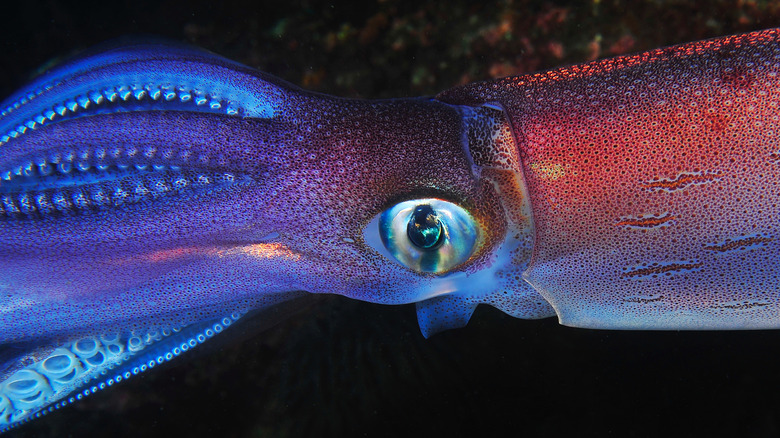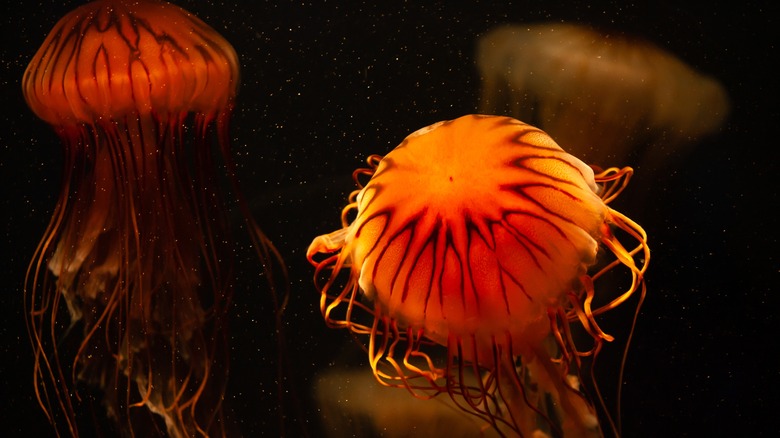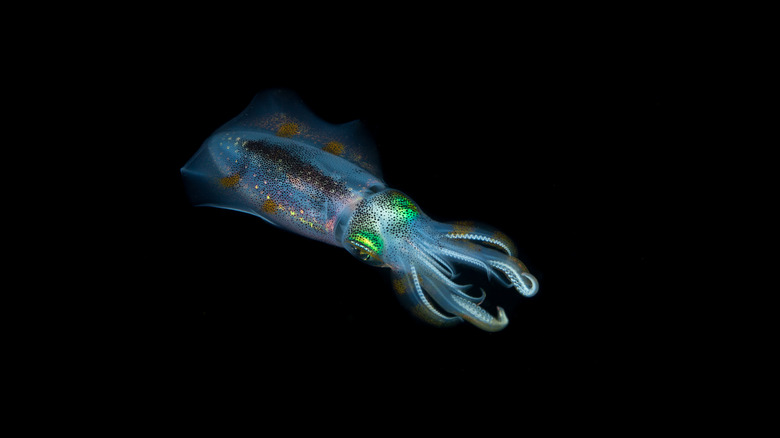Giant Squid Caught On Camera Shows How These Deep Sea Predators Hunt
The giant squid is a creature of great mystery. Despite its large size, it is rarely seen alive by humans because it prefers to stay deep underwater. According to Smithsonian, the giant squid had never been filmed in its natural habitat until 2012. Now, using a special camera, a team of researchers from the Oceanographic Foundation in Spain has caught the first video showing how this deep sea predator hunts down its prey.
The first step that the research team had to complete was creating a contraption that wouldn't scare away any giant squid. According to NPR, the giant squid has eyes the size of basketballs. Additionally, these creatures are used to living in low-light environments. This meant the team had to avoid using bright lights to film in order to protect the squid's large, sensitive eyes. Another challenge the team had to face was making sure the setup didn't make noise or vibrations when it moved. This ruled out the standard underwater vehicle approach for filming deep sea life (via Science Alert).
Researchers used fake bait on a unique setup to attract giant squid
Since traditional methods of underwater filming were out of the question, the Oceanographic Foundation research team devised a new plan. According to the study posted at Science Direct, they designed a passive deep-sea platform with a low-light camera. Then, they equipped the setup with bioluminescence-mimicking lures to attract the squid. According to Science Alert, they chose dim red lights to illuminate the area so any squid could be captured on camera without being irritated by harsh lights.
According to Smithsonian, the giant squid mostly feeds on deep sea fishes and other squid. However, the team at the Oceanographic Foundation decided to set up their lure to mimic a bioluminescent jellyfish. While jellyfish aren't part of a giant squid's typical diet, the team thought the bioluminescent lure might be more likely to attract a giant squid than a non-moving fish. This ended up working, and pretty soon they had found what they were looking for.
The team found that giant squid rely heavily on visual cues for hunting
After capturing the squid on video, the team noted some interesting behaviors. First, the squid appeared to ignore scented bait that had been placed on the platform and instead focused on only the bioluminescent bait (via Science Direct). But the most interesting part of the video had to be the way the squid approached the bait. According to Science Alert, the giant squid focused on the platform for six minutes before attacking, suggesting they hunt using stalking.
The findings of the Oceanographic Foundation study seem to contradict what was previously thought about giant squid. It has been thought that giant squid are ambush predators, snatching prey using their long tentacles, according to Smithsonian. However, up until this research, no one had witnessed a giant squid feeding before. Further study of the giant squid using non-obtrusive filming methods could help scientists discover if previous predictions were correct, or if this video just disproved them.


